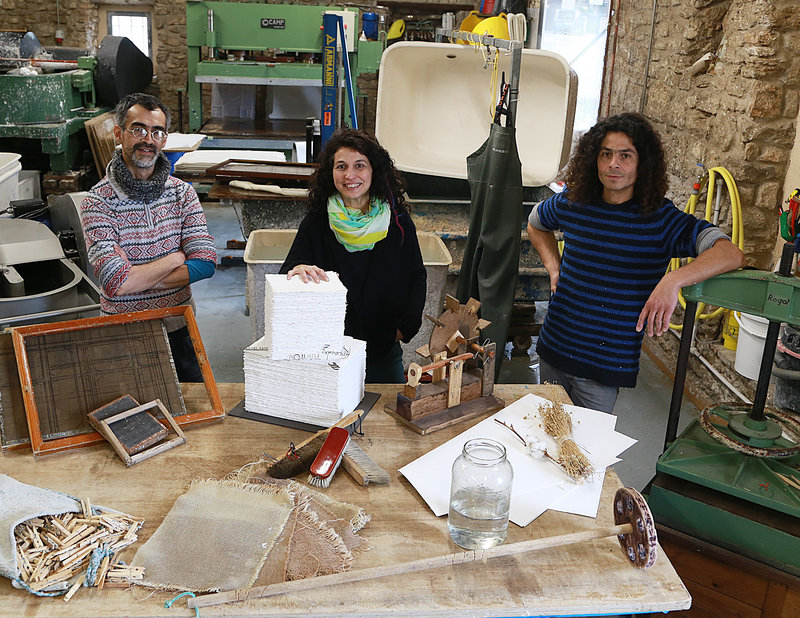craft papermakers
Banyoles (Gironès)
Sastres Paperers
Sastres Paperers may have only opened recently, but the company has more than 30 years of experience in papermaking. The workshop is located inside El Molí de la Farga, a building with a history that dates back some 300 years. Toni Sardà, Jordi Torrent and Mamen Cagigós are craftspeople and their enterprise has a social and cultural objective. They offer activities designed to show visitors how to create craft paper, as well as crafting paper under their own brand, AQUARI, and selling it to specialised shops, graphic design studios and also directly to artists.
1. Natural fibres: (cotton, linen, jute...) the raw materials from which the cellulose is extracted to make paper.
2. Hollander beater: the fibres are refined and mixed with water in the mixer in order to make the pulp needed for the paper. It’s a Dutch invention from the 17th century.
3. Tubs: useful for storing the pulp once it’s removed from the basin to make the paper sheets, and to clean the cloths used for separating the sheets and adding textures, and so on.
4. Water: an essential element in the process, used in nearly every step of paper production. Traditionally, mills have always been built near a waterway because of the need to work with hydraulic energy.
5. Wooden hand mixer: It’s often necessary to stir the water and the pulp in order to avoid fibres concentrating in the tub, which could lead to producing sheets of different density.
6. Fishermen’s waders: as they are always in contact with water, the workers need to wear waders and rubber boots as part of their daily job.
7. Sieve: the most basic tool of all. This is a strainer that filters and moulds the pulp to make the sheets of paper one by one.
8. Cloth: pieces of cloth are necessary to prevent the individual sheets of paper from sticking to each other. They also help to add the surface textures to each sheet.
9. Press: indispensable in the papermaker’s craft. It’s needed to remove water from the finished paper and to flatten it when taken from the dying rack.
10. Clothespins: when the paper is compressed, the sheets are hung up in a room with the windows open so as to dry them naturally.
11. AQUARI paper: the final product is dried and sold in a specialized shop and also to artists.
www.sastrespaperers.com

